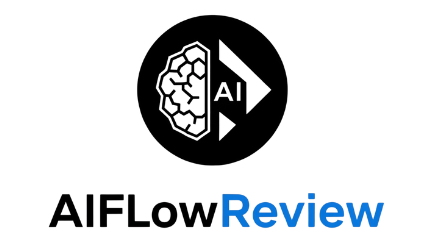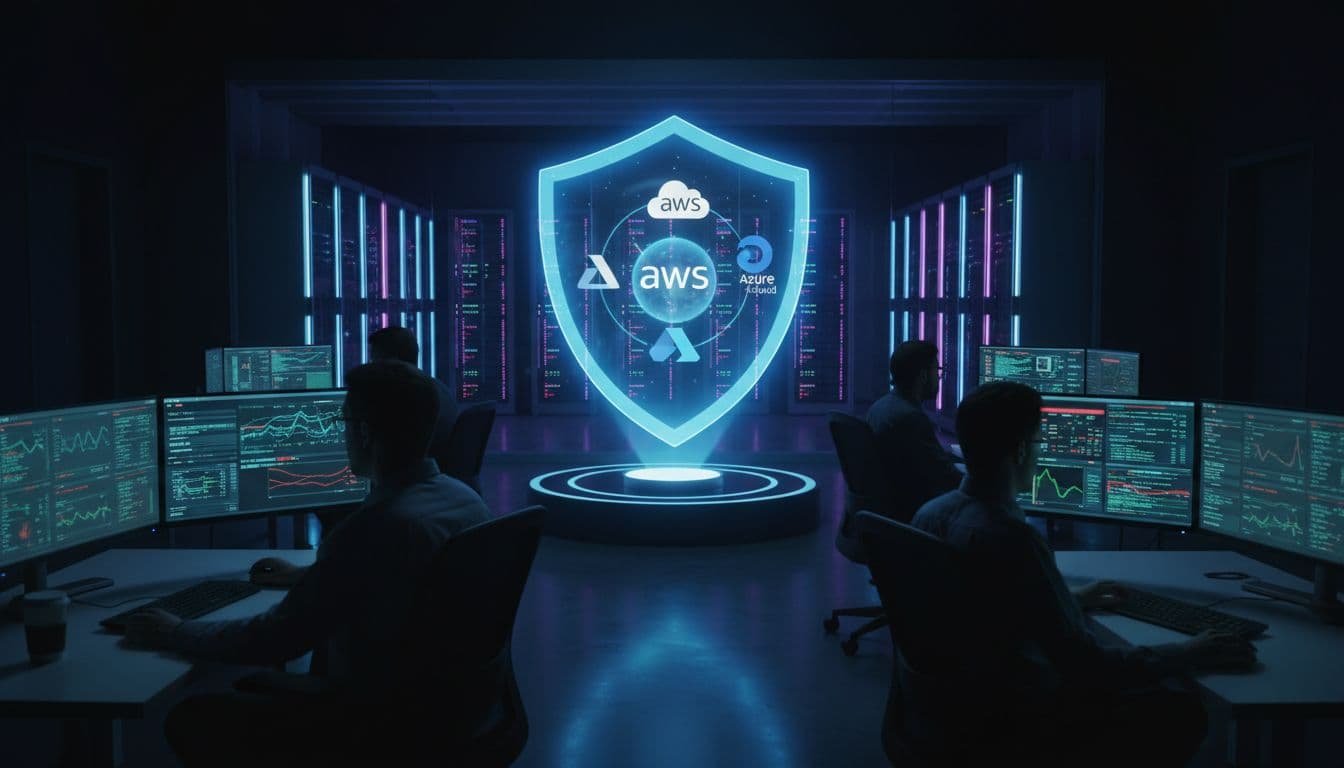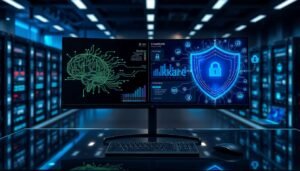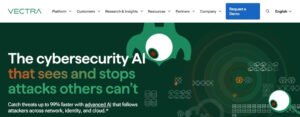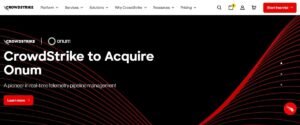I hear the same worry in almost every team I work with: in cloud risk management, threats do not wait. Environments shift by the hour, attackers script and use artificial intelligence (AI) to move faster, and small mistakes turn into big problems. That is why I pair AI and cybersecurity for cloud defense, especially across AWS, Azure, and GCP.
In 2025, the smartest teams use artificial intelligence (AI), including machine learning (ML), to watch workloads, containers, serverless apps, and identities in real time. They cut false alerts, scan Infrastructure as Code before deploy, find secrets in repos and images, and flag over-permissioned machine accounts. Even better, assistants using generative AI like Google Cloud’s Gemini help write rules and playbooks using plain language, which means I can go from detection idea to test in minutes. And since most shops now run multi-cloud, this approach keeps me consistent across providers.
Here is my practical guide. I cover the right data to collect, how to tune detections per cloud, how to automate response with guardrails, and how to measure results that leaders care about. If you want a simple primer first, my take on the basics of AI cybersecurity sets the stage.
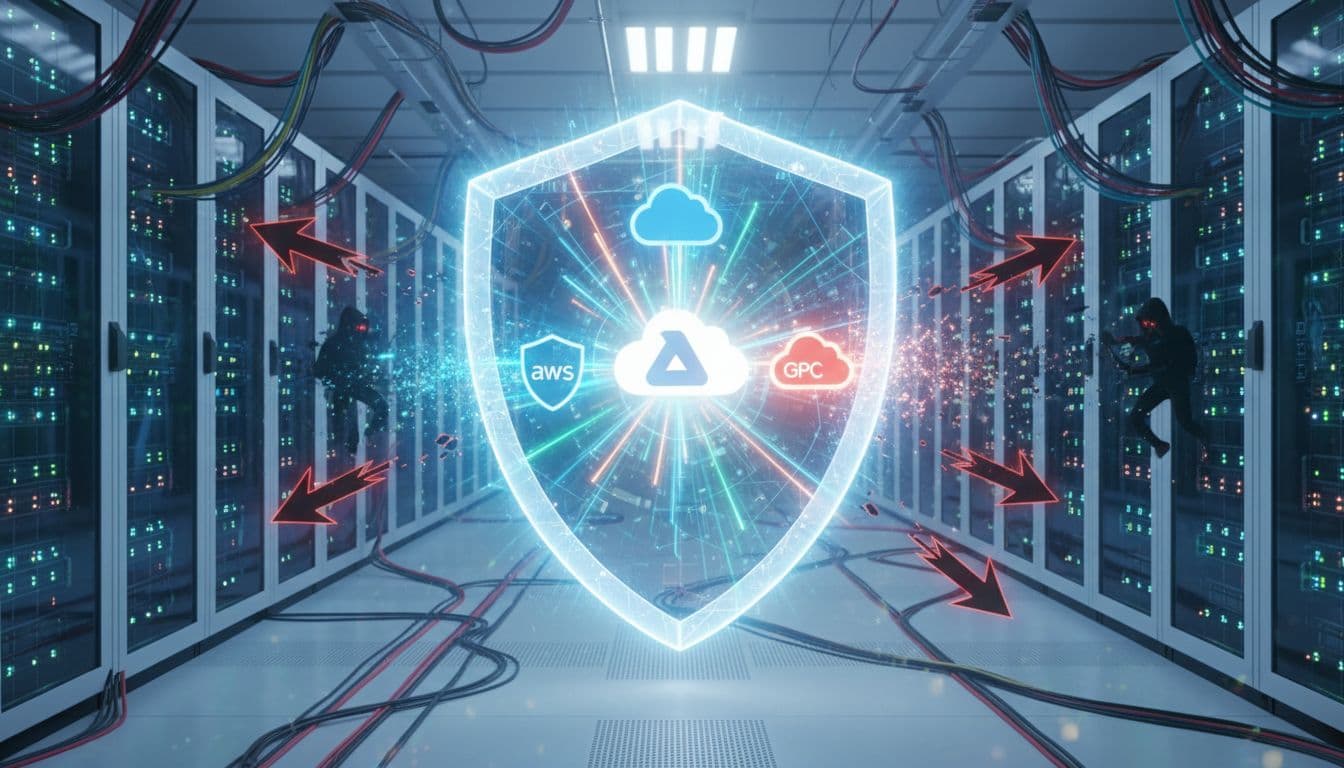 ## Why AI and cybersecurity in the cloud matter now: faster detection, fewer false alarms
## Why AI and cybersecurity in the cloud matter now: faster detection, fewer false alarms
AI-driven cloud threat detection looks across logs, network flows, identities, and configs to spot patterns and odd behavior. Instead of chasing one alert at a time, AI correlates signals through behavioral analytics. A strange login plus a risky API call plus a policy change? That is an incident worth my attention.
The benefits are clear. I speed up investigations, reduce false positives, and get better coverage across multi-cloud. 2025 adds a wrinkle. Attackers use AI to scale phishing, mutate payloads, and automate discovery. That forces defenders to move faster too, with smarter detections and safe automation. Industry roundups like the Top 5 Cloud Security Trends to Watch in 2025 echo the same thing, and the market now has solid tools to back it up.
Common risks AI can catch early:
- Exposed keys in repos, images, or CI logs
- Risky IaC changes, such as public buckets or weak security groups
- Over-permissioned service accounts that could enable lateral movement
- Unusual network egress that hints at exfiltration
- Account takeover signals like impossible travel or odd device patterns
This aligns with a zero-trust approach. I verify every request and action, not just the perimeter. Up next, I will show the data you need, how to tune detections for each cloud, when to automate response, and how to prove you are winning.
How AI finds threats across logs, networks, and identities
AI models learn baselines, detect anomalies, and correlate events across sources. Here are the core signals I feed into the system:
- Cloud audit logs to track API calls and admin changes
- Network flow logs to flag rare ports or data spikes
- Container and serverless logs for runtime behavior and execution paths
- Identity and access events across users and service principals
- Configuration changes for drift and policy violations
With these inputs, the model learns what “normal” looks like by service, identity, region, and time. It then scores deviations and links related events so I see the full story, not just noise.
Benefits you can measure: speed, accuracy, coverage
I keep the value simple and visible:
- Lower MTTD and MTTR by correlating signals and summarizing evidence
- Fewer False Positives, which gives analysts time back
- Higher true positive rate, because context improves fidelity
- Unified view across AWS, Azure, and GCP, which makes multi-cloud manageable
If you want a sense of which vendors deliver strong detection today, this 2025 roundup of AI security software is a solid starting point.
New risks in 2025: AI-powered attacks and machine identities
I am seeing more AI-powered phishing and discovery, plus smarter lateral movement from cybercriminals using artificial intelligence (AI) to enhance phishing attacks. Microsoft’s latest analysis points to the same trend, with defenders and attackers both using AI at speed. For background, this overview of Microsoft’s 2025 warning on AI cyber warfare explains how fast the tempo has become.
The top cloud risk I track is non-human identities with excess permissions. These are keys and service accounts that quietly hold more power than needed. AI helps me monitor permissions drift, find weak trust paths, and push least privilege. This focus strengthens overall cybersecurity practices.
Zero trust and multi-cloud alignment with AI
Zero trust thrives when every action is checked for identity, device, and context. AI helps by evaluating more signals in real time. Since many teams run multi-cloud, I also want consistent policies and detections across AWS, Azure, and GCP. A multi-cloud view of providers, like this 2025 AWS vs Azure vs GCP snapshot, helps teams plan that consistency from day one.
Build the right data foundation for AI threat detection across AWS, Azure, and GCP
In cybersecurity, Artificial Intelligence (AI) is only as good as the data. I start with a short, reliable checklist for each cloud and make sure the feeds are complete and timely.
![Photorealistic visualization of multi-cloud logs flowing into a central analytics engine with identity, network, and workload context. Image created with AI.]
Collect the right signals in AWS, Azure, and GCP
Must-have log sources by cloud:
CloudAudit and AdminNetworkWorkloadIdentityAWSCloudTrail, ConfigVPC Flow Logs for network securityEKS, Lambda, API Gateway logsIAM events, CloudTrail authAzureActivity Logs, PolicyNSG Flow LogsAKS, Functions, App Gateway logsEntra ID sign-ins, Graph APIGCPAudit Logs, PolicyVPC Flow LogsGKE, Cloud Functions, API Gateway logsIAM logs, Cloud Identity
These identity and access events are essential for UEBA, enabling the analysis of user and entity behavior to detect anomalies. I always include container and serverless signals, plus API gateway logs. These fill the gaps where attackers often move first.
Normalize data and add context for better AI results
Good structure boosts accuracy in data analysis:
- Use standard field names, timestamps, and schemas
- Add asset tags, business criticality, and data classification
- Label identity types, such as user vs service account
- Map events to MITRE ATT&CK to speed triage and hunting
When those fields are clean, Machine Learning (ML) models do a better job learning baselines, and analysts trust the results.
Scan IaC and secrets early to cut risk and noise
I shift left with AI checks on IaC and secret scanning as part of vulnerability management before deploy. The goal is to catch public exposure, weak network rules, and hardcoded credentials early. This move reduces later alerts and keeps release velocity high. For ideas on what tools to consider, the Top 8 Threat Detection Tools 2025 guide and this list of AI-driven security tools for 2025 offer useful context.
If your stack leans on APIs, runtime protection matters. I have had strong results with tools that track logic abuse, bot spikes, and data flow, like in my Salt Security API protection review 2025.
Build for compliance by design
I prefer real-time compliance scoring against HIPAA, PCI DSS, and SOC 2, and I keep policy as code. Data residency, retention for data privacy, and access controls should be clear and simple. This keeps auditors happy and lowers your risk of accidental drift.
Tune AI Threat Detection for AWS, Azure, and GCP: a step-by-step playbook
Here is the repeatable process I follow for signal-to-noise wins in cybersecurity.
Set behavior baselines by cloud, service, and identity
Profile normal patterns:
- Authentication patterns for logins by location, device, and time
- API calls per service and role
- Data transfers by volume and destination
- Admin actions by team and maintenance window
Use these baselines to spot rare spikes and odd mixes of activity.
Use AI assistants to write rules and playbooks
Natural language helps speed up rule creation and investigation steps, addressing talent and skill gaps in cybersecurity teams. In GCP, Gemini can draft rule logic and playbooks that pull from frontline intelligence. I do the same in other ecosystems with their native copilots powered by artificial intelligence (AI). This is how I move fast without skipping oversight, including enhancing SIEM solutions through better signal correlation.
For broader tooling context, I compare stacks often. My take on the Darktrace vs CrowdStrike comparison for 2025 covers different detection focuses and where each shines.
Cut false positives with allowlists and seasonality
I add suppression rules for known safe behavior, then respect seasonality like quarter-end or launch events. Thresholds help too. I track precision and recall to balance coverage with quality.
Prioritize alerts with risk scores and business context
I route by risk using:
- Identity sensitivity and privilege
- Data classification and exposure
- Internet-facing paths
- Likely lateral movement routes
High-risk alerts get human eyes first. Lower-risk items can flow through automation with guardrails, leveraging artificial intelligence (AI) for efficient prioritization.
Cloud-specific tuning tips: AWS, Azure, GCP
- AWS: Unusual IAM role assumption, cross-region KMS key use, rare Lambda invocations tied to new VPC patterns. Compare against CloudTrail and VPC flow baselines to strengthen cybersecurity.
- Azure: Risky Entra sign-in locations, mass role assignments in a short window, suspicious Key Vault access outside normal hours. Validate against Activity Logs and sign-in history for robust cybersecurity tuning.
- GCP: Service account key creation at odd hours, new project-level admin grants, spikes in VPC egress to unknown IPs. Track Audit Logs and IAM change sequences, incorporating generative AI for rule drafting.
If you want to see how vendors approach these use cases, my hands-on view of the Vectra AI platform shows identity and network detections that help across hybrid and cloud.
AI in Cybersecurity: Automate Investigation and Automated Response with Guardrails
Artificial Intelligence (AI) can enrich alerts, summarize evidence, and suggest the next step. I use auto-actions where the risk is low and the change is reversible. For anything that could impact production, I require human approval.
When to Auto-Contain vs Alert-Only
My simple decision rules:
- Automated Response for low-risk, reversible steps like token revocation or session kill
- Human approval for high-impact changes like IAM policy edits or network isolation, especially to mitigate insider threats
- Always log actions, inputs, and outcomes for a full audit trail
SOAR Playbooks and Copilots That Speed Incident Response
I build small, clear playbooks:
- Enrich alerts with who, what, where
- Check indicators across threat intelligence
- Create tickets with summaries and next steps
AI copilots help draft workflows and improve them over time. If you want a wider look at what is available this year, I keep a running list of the best AI cybersecurity platforms in 2025.
Simulate Attacks and Test Before Production
I test detections and automation before going live:
- Tabletop drills for decision speed
- Red team tests for real behavior
- Safe chaos experiments to stress thresholds and timing
Results feed back into suppression rules, thresholds, and playbook steps to refine incident response.
Coordinate Response Across Accounts and Clouds
Multi-cloud realities call for shared tags, common event formats, and standard runbooks. That way, AWS, Azure, and GCP teams move the same way, with the same language and steps. Industry overviews of leading providers, like this Top Cloud Service Providers 2025, help explain where each platform’s strengths line up with your runbooks in cybersecurity.
Prove value: metrics that matter for AI cybersecurity and an AI cloud security buyer’s checklist
I measure what leaders want to see, then I make it easy to share.
Metrics that show AI and cybersecurity are working
KPI shortlist:
- MTTD and MTTR, trended monthly
- Precision and recall to track alert quality
- Percent of incidents auto-resolved
- Compliance pass rate and drift detection
- Reduction in over-permissioned identities for better risk management
- IaC misconfigs blocked before deploy
For wider market context, vendor roundups like the Top 10 Best Cloud Security Companies offer a view of where platforms focus and what they claim on detection speed and fidelity.
Compliance dashboards and audit trails
I keep real-time scores for HIPAA, PCI DSS, and SOC 2 with drill-down evidence. Every automated action is logged with who approved what and when. Audits go from painful to predictable.
Team training and easy runbooks
Short, focused runbooks win. I add AI summaries to speed handoffs between SecOps and DevOps. Quick drills build muscle memory. This approach is consistent with 2025 cloud security trends covered here: Top 5 Cloud Security Trends to Watch in 2025.
Buyer’s checklist for 2025 AI cloud security
When I evaluate tools, I check for:
- True multi-cloud coverage and consistent policies
- Zero-trust approach controls for non-human identity risk
- IaC and secrets scanning in the pipeline
- Natural language copilots and rule generation
- Frontline threat intelligence feeds for defense against social engineering
- SOAR playbooks and safe auto-actions
- Strong APIs and SIEM solutions, data lake, EDR, endpoint security, and ticketing integrations
- Data residency options and clear retention controls
- Transparent pricing and privacy terms with password protection for authentication
- Clear security for the AI itself, including AI governance of the model and data supply chain
If you need a comparison point while shopping, I keep an eye on how vendors stack up in guides like the Top 8 Threat Detection Tools 2025 and community lists such as AI-driven security tools to know in 2025.
For more detailed, hands-on evaluations, my reviews of enterprise tools are updated through the year, including AI-driven API threat detection with Salt and AI-powered security with Vectra in 2025.
A practical wrap-up you can use today
Here is the simple path I follow. Collect the right data, tune detections for each cloud, add safe automation, and measure outcomes that matter.
Try this 30-day starter plan:
- Week 1: Connect core logs and set baselines by service, region, and identity.
- Week 2: Enable the top 10 detections and test them with safe simulations.
- Week 3: Add one Automated Response with approval gates, like token revoke.
- Week 4: Ship a dashboard with KPIs and a short runbook for night shift use.
Artificial Intelligence (AI) and cybersecurity are strongest together, especially across AWS, Azure, and GCP. With smart data, tuned detections, and guardrails on automation, you gain speed without losing control against advanced threats like deepfakes. If you want help choosing tools that actually deliver on these points, my 2025 roundup of AI security software and this focused Darktrace versus CrowdStrike guide give you grounded, test-based context. The next step is simple: pick one cloud, wire the logs, and prove a win by detecting malware. That early proof builds momentum, and momentum is the secret to strong, AI-driven cloud defense.
